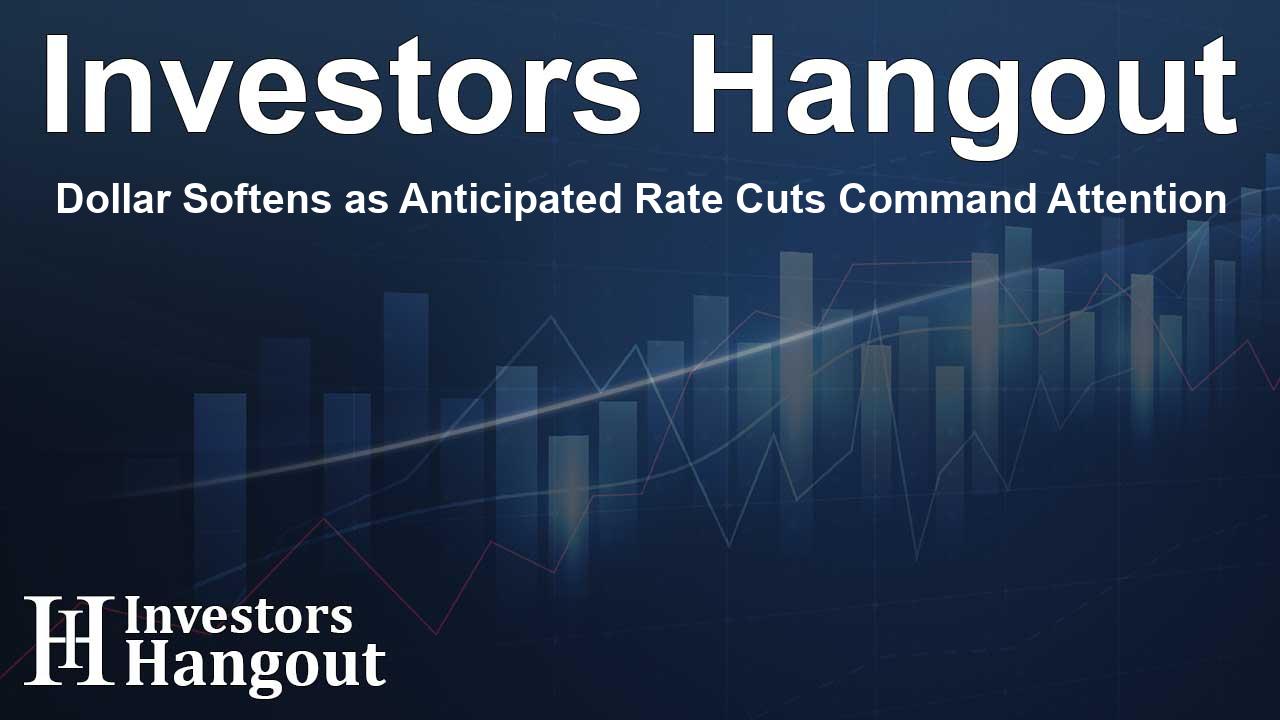Dollar Softens as Anticipated Rate Cuts Command Attention

The Dollar's Recent Decline
The dollar has seen a considerable drop lately, particularly as everyone turns their attention to the coming decisions from major central banks. Traders are closely following the Federal Reserve's upcoming policy meeting and the expected interest rate cuts.
Investor Reactions to Rate Speculation
On a recent Friday, both the euro and yen benefited from a rise, reflecting the market's response to the Fed's pending announcements. The forthcoming decision from the Federal Reserve, which many expect will include a reduction in interest rates, has left investors feeling anxious and weighing their choices. This uncertainty has sparked increased trading activity, as players speculate whether the Fed will go for a 25 or a more significant 50 basis point cut.
Market Insights on Economic Indicators
Recent economic figures have significantly influenced market expectations. The release of U.S. jobless claims showed an uptick, fueling speculation about a larger rate cut in the Fed's upcoming meeting. Currency strategist Christopher Wong from OCBC pointed out that media reports heightened debates about the Fed’s possible actions, leading traders to lean towards the idea of a substantial rate adjustment.
Key Economic Data Shaping Decisions
Current data from the CME FedWatch tool indicates a 43% chance the Federal Reserve might choose a 50 basis point cut, up from just 27% the day before. In parallel, there’s a 57% likelihood for a 25 basis point reduction. With three remaining policy meetings this year, traders are factoring in an overall easing of 113 basis points. This environment highlights the dollar's heightened sensitivity to these economic signals.
Global Central Bank Perspectives
Looking at the wider picture, the European Central Bank (ECB) also made some notable changes by lowering rates recently. Yet, comments from ECB President Christine Lagarde regarding moderating expectations for another rate cut next month resulted in a rally for the euro. The euro increased to about $1.1083, maintaining a prior gain of 0.57%. This shift placed the dollar index, which measures the U.S. dollar against six other currencies, at roughly 101.11.
Other Central Banks to Watch
Adding to the market dynamics, both the Bank of England and the Bank of Japan are set to hold policy meetings next week. There’s a lot of speculation around their potential decisions, particularly as the yen has gained slight strength, now trading at 141.38 against the dollar. Naoki Tamura, a board member of the Bank of Japan (BOJ), mentioned that the central bank might look into gradually increasing rates to at least 1% in the upcoming fiscal year.
Expectations in the UK Market
Meanwhile, the British pound also showed modest gains, trading at $1.31415, as markets anticipate that the Bank of England will keep interest rates steady following an adjustment in August. These expectations indicate an 80% probability that rates will remain unchanged at the next meeting.
Final Thoughts on Upcoming Trends
As the dates of the central bank meetings approach, the mix of these economic indicators reveals a tense atmosphere in trading markets. The choices made by the Federal Reserve and other major banks could trigger further shifts in currency values. Traders need to stay updated and ready to adapt to the changing financial landscape.
Frequently Asked Questions
What is the current state of the dollar?
The dollar has recently weakened as traders are anticipating rate cuts from the Federal Reserve and other central banks.
What are the expectations for the Federal Reserve's upcoming meeting?
Most traders expect a rate cut, with speculation around whether it will be 25 or 50 basis points.
How did recent economic data influence the markets?
The release of U.S. jobless claims data has led to renewed bets on a significant rate cut from the Fed.
What other central banks are making decisions next week?
The Bank of England and the Bank of Japan are also holding policy meetings that are being closely monitored by traders.
How have currency values changed in the wake of these developments?
Both the euro and the yen have seen increases, reflecting shifting investor sentiment toward anticipated central bank actions.
About The Author
Contact Henry Turner privately here. Or send an email with ATTN: Henry Turner as the subject to contact@investorshangout.com.
About Investors Hangout
Investors Hangout is a leading online stock forum for financial discussion and learning, offering a wide range of free tools and resources. It draws in traders of all levels, who exchange market knowledge, investigate trading tactics, and keep an eye on industry developments in real time. Featuring financial articles, stock message boards, quotes, charts, company profiles, and live news updates. Through cooperative learning and a wealth of informational resources, it helps users from novices creating their first portfolios to experts honing their techniques. Join Investors Hangout today: https://investorshangout.com/
The content of this article is based on factual, publicly available information and does not represent legal, financial, or investment advice. Investors Hangout does not offer financial advice, and the author is not a licensed financial advisor. Consult a qualified advisor before making any financial or investment decisions based on this article. This article should not be considered advice to purchase, sell, or hold any securities or other investments. If any of the material provided here is inaccurate, please contact us for corrections.
